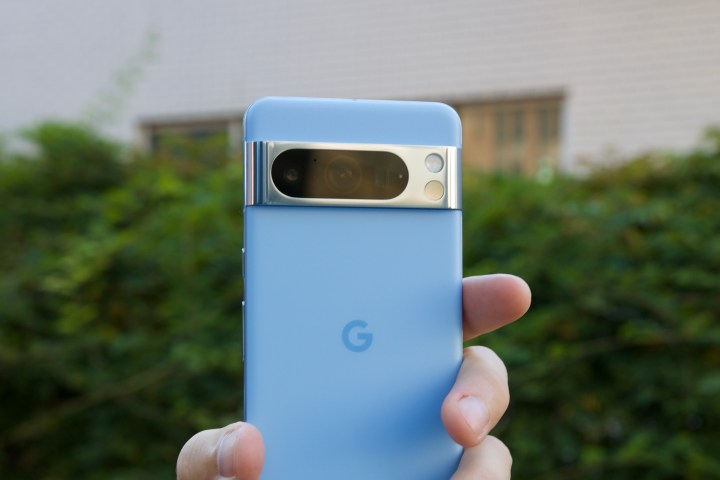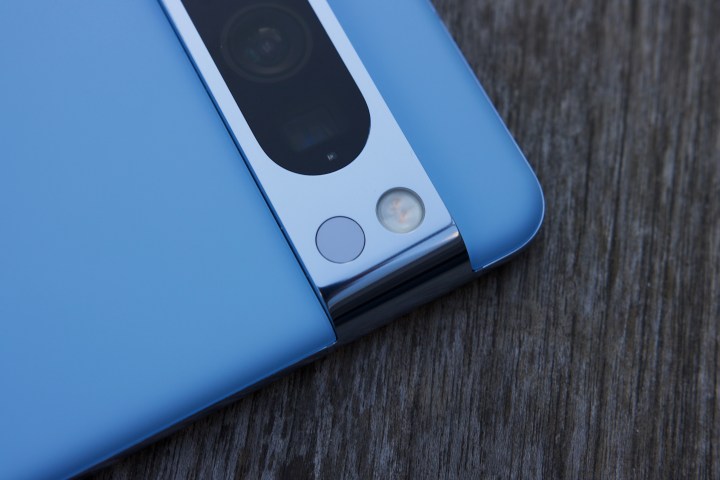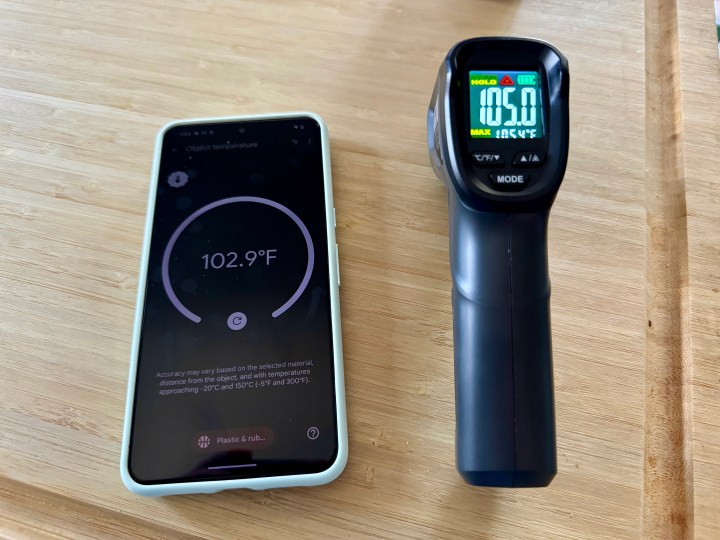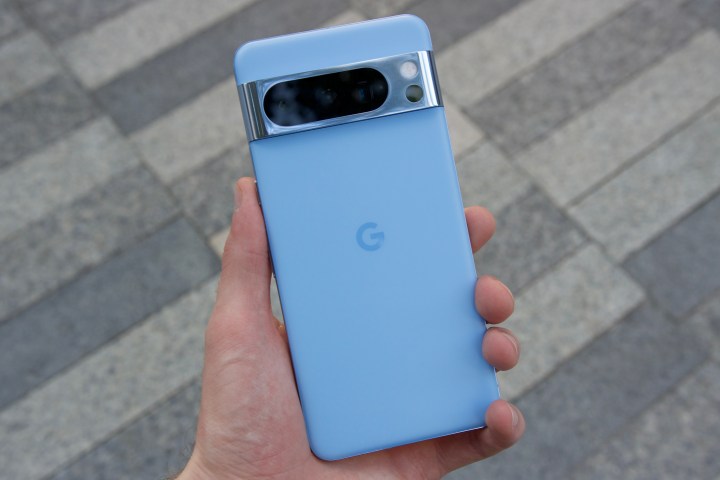
The “Made by Google event officially wrapped up last week, and we now have the next lineup of Pixel devices. This includes the Google Pixel 8 Pro, the regular Google Pixel 8, the Google Pixel Watch 2, and a couple of new colors for the Pixel Buds Pro.
With the Pixel 8 Pro, we have a lot of nice upgrades. This includes a new Super Actua LTPO OLED display that reaches 2,400 nits of peak brightness and has Corning Gorilla Glass Victus 2, the Tensor G3 chip, a slightly larger battery, and an improved camera system with 50MP main, 48MP ultrawide, and 48MP telephoto lenses.
One of the more interesting additions, though, is the Pixel 8 Pro’s temperature sensor located on the back of the phone, underneath the LED flash. So how does it work, and just how useful is it?
How does the temperature sensor on the Google Pixel 8 Pro work?

We’re not sure who was asking for a temperature sensor on their next
To use the temperature sensor, you’ll need the Pixel Thermometer app. When I received my review sample of the

When you launch the Thermometer app, it will tell you to point the sensor on the back of the phone within 5 centimeters or 2 inches of the object you’re measuring for best results (a pulsating icon on-screen helps you see where the sensor is). Then all you have to do is tap the giant “Tap to measure” button, and boom — you have a temperature reading.
The Thermometer app has a default setting that should work for any material you point it at. But Google does include the ability to choose a specific material if you intend to use the object temperature sensor for containers or the contents inside. These are the available materials to choose from:
- Food and organic
- Beverages and water
- Cast-iron
- Ceramic and glass
- Matte metal
- Shiny metal
- Plastic and rubber
- Fabric
- Wood
- Walls and windows
Picking a specific material may help with the accuracy of the temperature reading you get. For example, you may want to measure how hot your cast-iron pan is before throwing those steaks on it. Or maybe you’re curious about how cold your stainless steel tumbler is keeping your iced coffee. Or perhaps you’re curious about how hot your iPhone 15 Pro gets when it is so-called “overheating.”

I can’t say I ever wanted a temperature sensor on my phone before, and honestly, while it’s cool to check and say, “Hey, my phone can do this,” it just really seems like a gimmick.
This also seems like something that was thought of during the height of the pandemic in 2020, which would indicate how far back designs and features are thought of before being implemented into actual hardware. And while Google eventually plans to use the
Is the Pixel 8 Pro temperature sensor accurate?

You may be wondering just how accurate this temperature sensor on the
I measured my

I also measured my stainless steel Starbucks tumbler with some iced coffee inside. I set the
Lastly, I decided to check how cold my refrigerator and freezer were. The

There are definitely some discrepancies with the
The Pixel 8 Pro’s temperature sensor is strange

The
Besides, right now, the temperature sensor can only measure objects, as Google needs FDA approval for skin temperature measuring. How many times have you wanted to take the temperature of random objects on a daily basis? For me, it’s never really crossed my mind — yes, something is very hot or very cold, but I never wondered: “What is the exact temperature?”
Maybe you need to know the exact temperature of the pan before you throw your steak on for that perfect sear, but then again, based on the discrepancy of degrees with an infrared temperature gun, I’m not sure I can trust the numbers of the
Sure, it’s something that you can show off to your friends as a neat trick: “But can your phone do this?” Otherwise, I don’t think this is something that I’ll be using regularly 0n the
Editors' Recommendations
- The Google Pixel 8 is about to get a long-awaited update
- These are two of the most confusing Android phones I’ve used in 2024
- I have the Google Pixel 8a. Here are 6 things you need to know
- Motorola just launched a new Android phone to take on the Google Pixel 8a
- The Google Pixel 8a is the Pixel phone I’ve been waiting for
